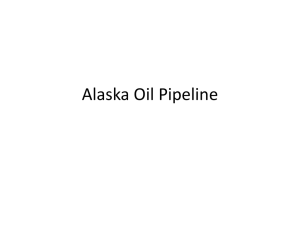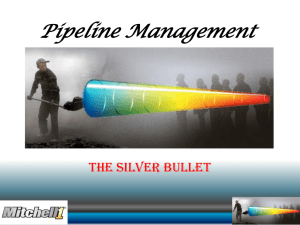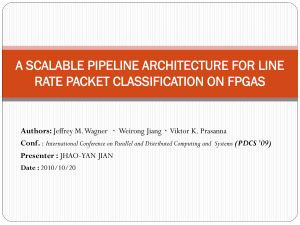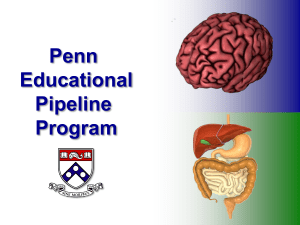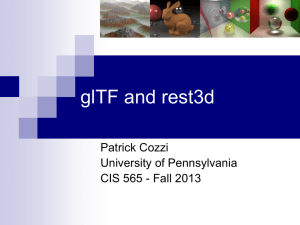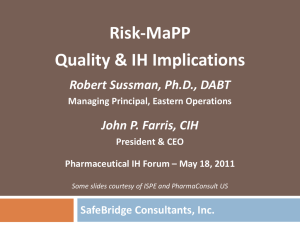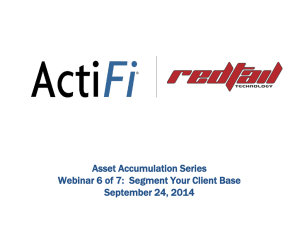What is the Data Pipeline Project?
advertisement
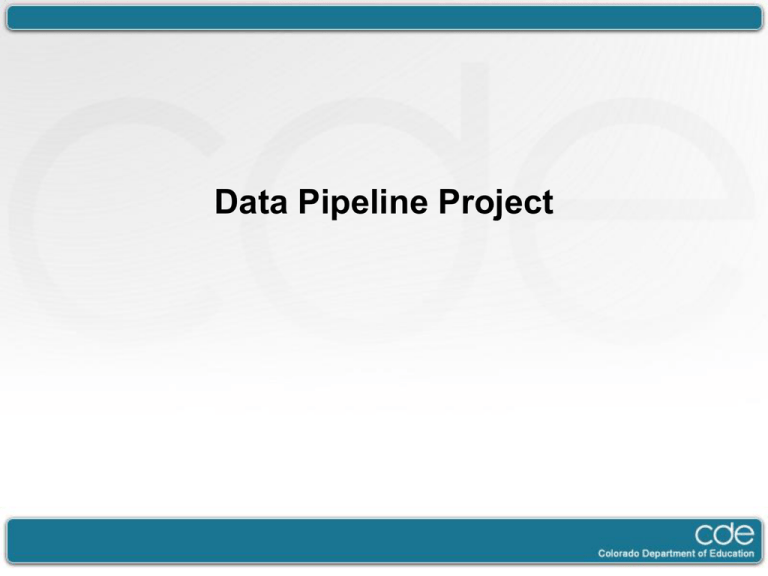
Data Pipeline Project Topics for Discussion • CDE Overview • • Vision, Mission, Goals RISE • Data Pipeline Project • • • • Overview Collection Submission Process • Current • New Benefits What does that mean for you? • Implementation Approach • Project Timeline • Where can I find more information? Together We Can Vision All students in Colorado will become educated and productive citizens capable of succeeding in a globally competitive workforce. Mission The mission of CDE is to shape, support, and safeguard a statewide education system that prepares students for success in a globally competitive world. State Education Goals • Globally competitive workforce • Ensure every student is on track to graduate postsecondary and workforce ready. • Ensure students graduate ready for success in postsecondary education and the workforce. • Increase achievement and national/international competitiveness for all students . • Great teachers and leaders • Increase and support the effectiveness of all educators. • Optimize the preparation, retention, and effectiveness of new educators. • Eliminate the educator equity gap. • Outstanding schools and districts • Increase school and district performance. • Foster innovation and expand access to a rich array of high quality school choices for students. • Best state education agency in the nation • Develop and implement CDE’s strategic direction. • Increase customer satisfaction with CDE’s communication, services, and systems. • Attract and retain outstanding talent to CDE. Other State Agencies TCAP Teacher / Student Data Link Data Pipeline RISE (Relevant Information to Strengthen Education) is a collection of integrated systems that will provide secure and immediate information about students, educators and schools to improve instruction and support student success from preschool to career. Data Pipeline Overview What is it? Replacement of the Automated Data Exchange (ADE) system with a new method of capturing data that will reduce the data burden on Local Education Agencies (LEAs). • Move from a program-centric to a student-centric data collection model Why are we doing this? • Reduce the burden of correcting data prior to state reporting • Reduce the data redundancy placed on LEAs • Provide actionable data back to LEAs that support decision making What does this mean for my district? • • • • • File layouts will change More roles in Pipeline will allow more people to see reports Errors can be corrected on-line Reports on all collections can be run at any time (i.e. HQ) Data may be submitted at any time Collection Submission Process • Current Process – Point-in-time • Level 1 & 2 edits – collection specific – Flat files only – Each collection has a collection owner • New Process – Interchanges rather than collections • Ed-Fi data model (national standard) • Level 1 business rules – Snapshots • Level 2 business rules – Submission options – Process for interchanges will need to be developed Interchanges Interchange Collections Represented Files Required Student & Enrollment Student October Student End of Year Special Education December Count (student) Special Education End of Year Pre-coded Labels SBD (CELA, TCAP, ACT) Human Resource Special Education December Count (staff) Special Education Discipline Student Student School Association Advanced Course Completion Staff & Assignments SPED Discipline Staff Staff Assignment Association Discipline Incident Discipline Action Special Education Child Student Special Education Participation Student Parent Association Special Education IEP’s Special Education December Count (student) Special Education End of Year Teacher/Student Data Link Math and Science Partnerships Title 1 Interchange Consolidated State Performance Report (CSPR) TBD Math Science Partnership Non-Interchange Collections Collections Represented Files Required READ (formerly CBLA) 1 flat file Colorado English Language Assessment (CELA) 1 flat file Transitional Colorado Assessment Program (TCAP) American College Testing (ACT) 1 flat file Report Card March N/A – Online web form December Finance 1 flat file RITS (Batch & Read) 1 flat file each EDIS (Batch & Read) 1 flat file each Organizational Profile - Directory N/A – Online web form 11th Grade Alternate Assessment N/A – Online web form 1 flat file Benefits of the new process • • • • • • • • • • Earlier clean up of data Centralized set of student demographics No longer just about state reporting Getting ahead of the cross-LEA errors and post collection processes Data on transferred students – dropout rates Ability to run snapshots at any time (i.e. HQ) RITS/EDIS Optimizer now in Pipeline Web services will reduce data submissions More roles in the Pipeline Online error corrections What does this mean for you? • • • • File layouts will change New process will need to be developed Moor coordination with AU’s/Districts Others? Implementation Approach • Piloting Pipeline – Phase I - 3-5 districts per collection; 1-3 months – Phase II – additional districts through June 2013 • Retiring ADE – Year round collections (Directory, RITS Batch, EDIS Batch) will open in Pipeline on July 1, 2013. – All other data will begin in Data Pipeline on September 1, 2013. – Collections opening in ADE during 2013 will also close in the ADE system. Example, Student End of Year will open in ADE around May 2013 and close in ADE around November 2013. At the same time data for the new collections will also be submitted in the Data Pipeline beginning September 1, 2013. – Officially close on December 31, 2013. Timeline Where can I find out more information? • Data Pipeline Project Lisa Bradley - bradley_l@cde.state.co.us 303-866-4902 Or visit http://www.cde.state.co.us/rise/ADEReplacement.asp


